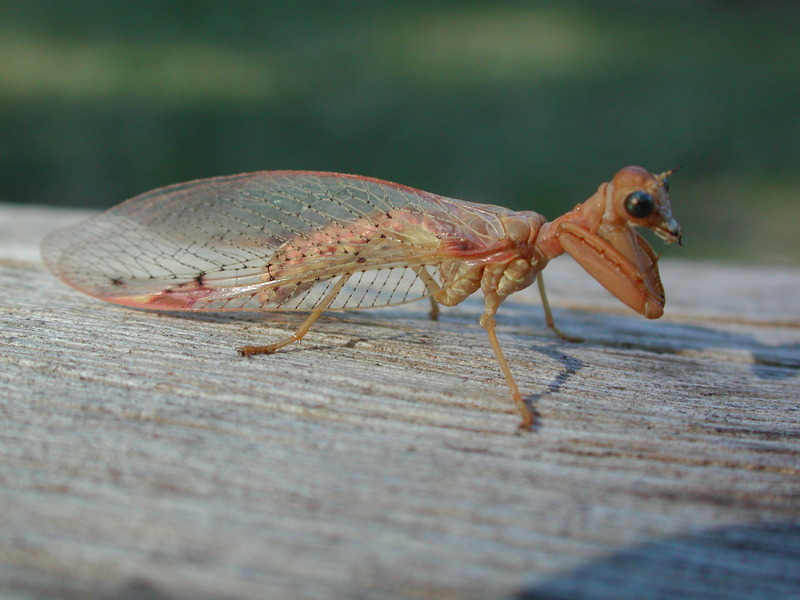Mantidfly, Mantid Lacewing (Family: Mantispidae) - Wiki Mantispidae
From Wikipedia, the free encyclopedia
[Photo] Mantidfly(Mantispidae), Ditaxis biseriata (det. Hauser, 2006), Carnarvon National Park, Queensland, Australia. Date 2002-10-09. Author Fritz Geller-Grimm
Mantispidae is a family of small (20???47 mm) neuropterous insects, known as mantid-flies, mantid lacewings or mantis-flies.
They belong to the order Neuroptera, which includes the lacewings as well. Mantidflies are sometimes wasp mimics, but they get their name from their mantis-like appearance, as their spiny front legs are modified to catch prey ("raptorial") and are very similar to the front legs of mantids. The adults are predatory insects that are often nocturnal, and are sometimes attracted by porch lights, or blacklights. They actively chase their prey, which consists of small moths, caterpillars, and any other thing they can catch. They are usually green, brown, yellow, and sometimes pink, and have 4 membranous wings which may sometimes be patterned (especially in wasp mimicking species) but are usually clear. They lay small, green, stalked eggs in clusters. The larvae are parasitoids on spider eggs, bee larvae, or wasp larvae. Larvae undergo hypermetamorphosis, being campodeiform in the first instar and scarabaeiform in later instars. There are many genera and species worldwide, especially in the tropics and subtropics, but only 6 genera and 15 species in North America:
Climaciella
Climaciella brunnea
Drepanicus
Drepanicus prasinus
Entanoneura
Entanoneura floridana
Mantispa
Mantispa interrupta
Mantispa pulchella
Mantispa sayi
Mantispa scabrosa
Mantispa viridis
Nolima
Nolima dine
Nolima kantsi
Nolima pinal
Plega
Plega banksi
Plega dactylota
Plega fratercula
Plega signata
http://en.wikipedia.org/wiki/Mantispidae
| The text in this page is based on the copyrighted Wikipedia article shown in above URL. It is used under the GNU Free Documentation License. You may redistribute it, verbatim or modified, providing that you comply with the terms of the GFDL. |
